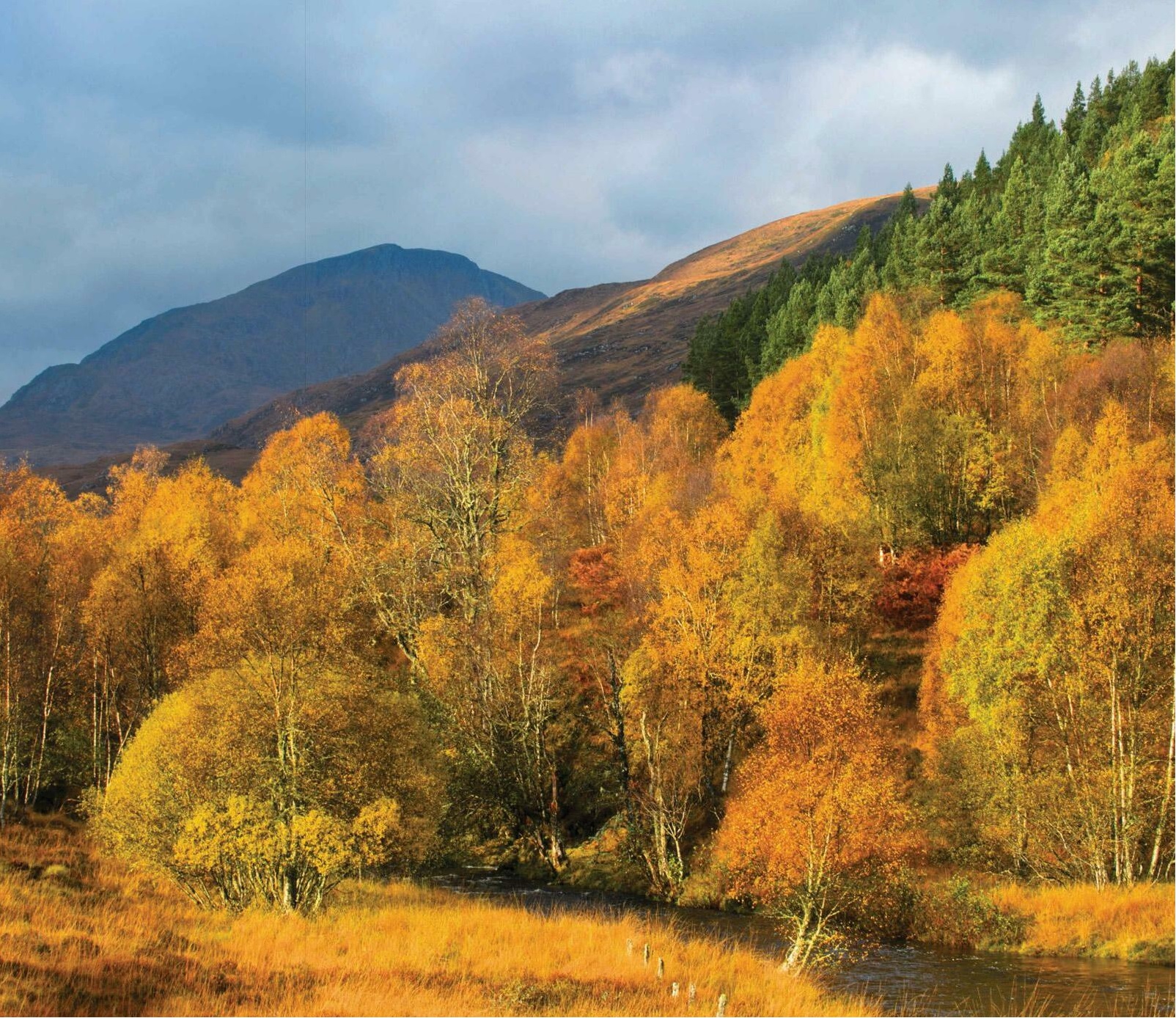
OF ALL BRITAIN'S WILDLIFE spectacles, surely the hardest to miss is the fanfare of autumn colour marking both the end of summer and the long descent to winter. Providing the most fabulous fillip on any woodland walk, the precise reasons why so many of our trees undergo such a radical transformation at this time of year are still shrouded in mystery.
The woody parts of Britain's deciduous trees are more than able to survive the winter. But with light levels becoming too low to enable photosynthesis and trees needing to conserve water when the ground may be frozen, the leaves suddenly become an accessory that trees are simply unable to keep.
Photosynthesis is the process by which plants use the sun's rays to power the conversion of carbon dioxide and water into sugars. This reaction occurs due to the presence of the pigment chlorophyll, quite possibly the world's most important compound. Chlorophyll absorbs the red and blue parts of the spectrum while reflecting green, which explains why green is the dominant colour from April to October.
Although chlorophyll is able to perform the magic trick of harnessing the sun's energy, its unstable nature means it is easily broken down, so in order to maintain a constant supply of sugars through the spring and summer months, the trees' production line of chlorophyll must be running 24 hours a day.
Denne historien er fra October 2023-utgaven av BBC Wildlife.
Start din 7-dagers gratis prøveperiode på Magzter GOLD for å få tilgang til tusenvis av utvalgte premiumhistorier og 9000+ magasiner og aviser.
Allerede abonnent ? Logg på
Denne historien er fra October 2023-utgaven av BBC Wildlife.
Start din 7-dagers gratis prøveperiode på Magzter GOLD for å få tilgang til tusenvis av utvalgte premiumhistorier og 9000+ magasiner og aviser.
Allerede abonnent? Logg på

WALKING WITH PENGUINS
Mourning her late husband, photographer Ursula Clare Franklin needed a new direction. Soon she was travelling the world, on a quest to photograph her favourite animal, the penguin all 18 species of them

"Satellites and space tech play a huge role in protecting the natural world"
Far above our heads, space technology is supporting conservation in exciting and vital ways

FOREVER YOUNG
The prehistoric-looking insect that never grows up

BIRDS THAT BREAK THE RULES
Discover the extraordinary birds that defy nature's norms

FEMALE OF THE SPECIES
Vampire bats make for blood-spewing besties

Onagers gallop back to Saudi Arabia
Rare subspecies fills the desert niche left by its extinct relative

Front lines for nature
Inside the ambitious UK project rallying local communities to fight for wildlife

"Europe seems hellbent on creating the most hostile environment for bears possible"
WE EUROPEANS ARE INCAPABLE of living alongside predators.

Airborne lifts off on Sky Nature
ACROSS THE PLANET, ANIMALS HAVE conquered the skies in ways we can only dream of.

CROSS COUNTRY
Translocating elephants is no mean feat-but it's helping this iconic mammal to reclaim its historic lands